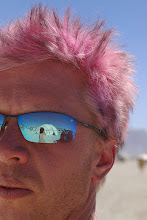I've run into a situation where I need to distribute a VM as a bootable ISO image, not the usual VM descriptor file + disk image(s).
Getting this to work was a little hacky but not too hard. My idea was to create a rescue CD/DVD ISO image file with an automated installer and the target VM filesystem contents.
The overall process looks like this:
1. build your appliace as usual
2. use VDDK to extract the full filesystem contents of your VM to one or more archive files
3. extract the contents of a Linux rescue CD (sysresccd) to a temporary file tree
4. copy the VA filesystem archives to the root directory of the rescue cd files (isoroot)
5. drop in an installer shell script named "autorun" into the isoroot
6. roll up the new ISO image via mkisofs
First I downloaded sysresccd from http://www.sysresccd.org/Main_Page and VMware's virtual disk access application VDDK from http://www.vmware.com/support/developer/vddk/
I do all my development on Linux (CentOS5 amd64) so to install VDDK I first had to install fuse and fuse-lib via "yum -y install fuse fuse-lib". After that I could expand the VDDK compressed tarball and run its vmware installer.
The "autorun" script performs the following functions:
a. sanity checks the system using dmidecode (to make sure it's not going to wipe out your workstation hard drive by accident)
b. autopartitions the first hard drive it finds (sda) by piping partition data to fdisk
c. formats the new partitions
d. mounts the new parttions
e. transfers the filesystem contents from the compressed tar archives
f. verify file checksums to ensure the transfer wasn't corrupted
g. update fstab and other config files if necessary
h. reboots
The ISO image is only ~12MB more than the OVF/OVA due to good compression of the appliance filesystem contents in the ISO image. The bulk of sysresccd is hardly noticed.
Cool eh?
25 June, 2010
Subscribe to:
Comments (Atom)
